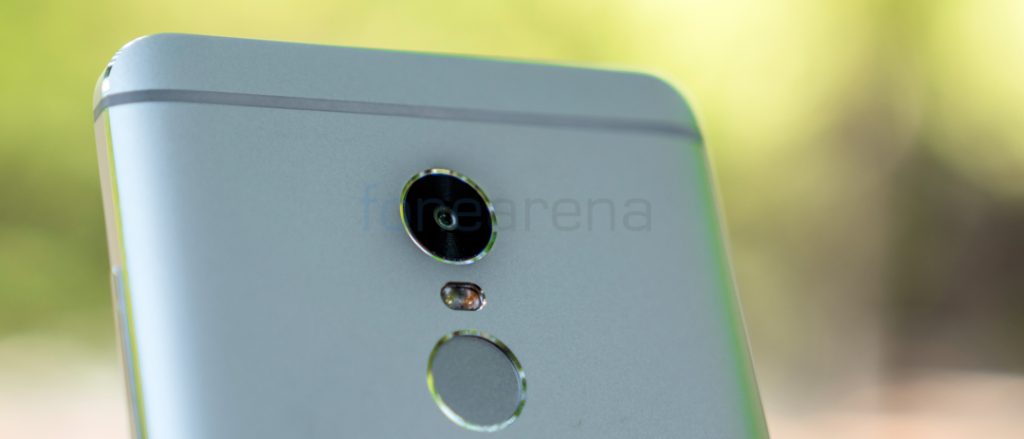
The Redmi Note 4 from Xiaomi was unveiled a good 10 months after the announcement of the Redmi Note 3. On paper, it seems to have quite a similar spec list compared to the Redmi Note 3 and seems to offer a package with few improvements. However, as history has shown us, specifications only tell a part of the story and we embark on this review to take a look and see whether or not it is the same case with the Note 4.
Unboxing
Here is the unboxing of the Redmi Note 4:
Here are the contents of the box:
- Xiaomi Redmi Note 4 smartphone in Silver color
- 2-pin charger (5V-2A)
- Micro USB cable
- SIM ejector tool
- Documentation
Design, Materials and Build Quality
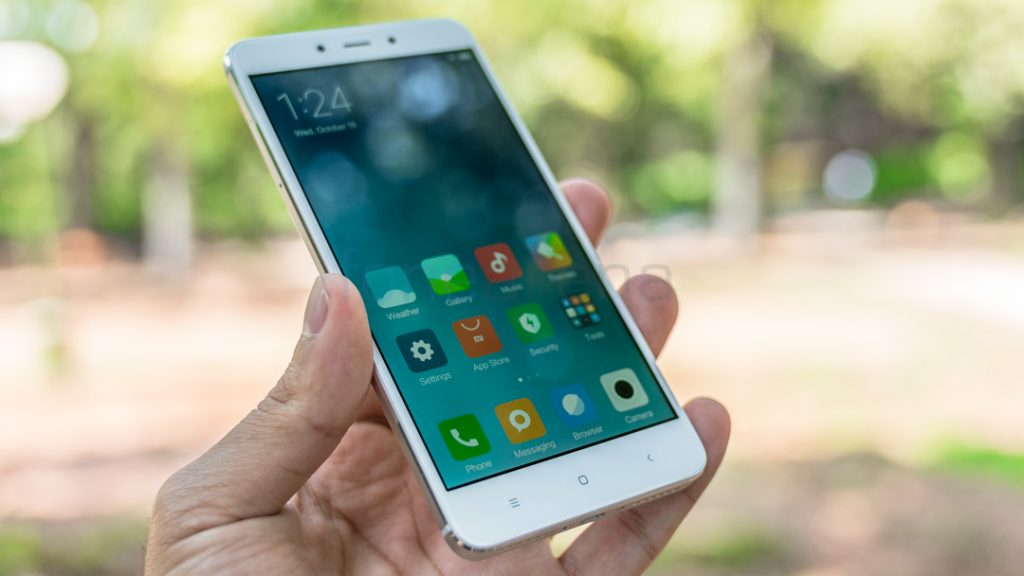
The Xiaomi Redmi Note 4 build on the Note 3 platform. Quite a similar size as well as design but with a lot of refinements and a build quality that easily surpasses the previous one. While the Redmi Note 3 had metal in its construction, its build and feel was noticeably behind other market offerings such as the LeEco devices which were also available at a similar price point.
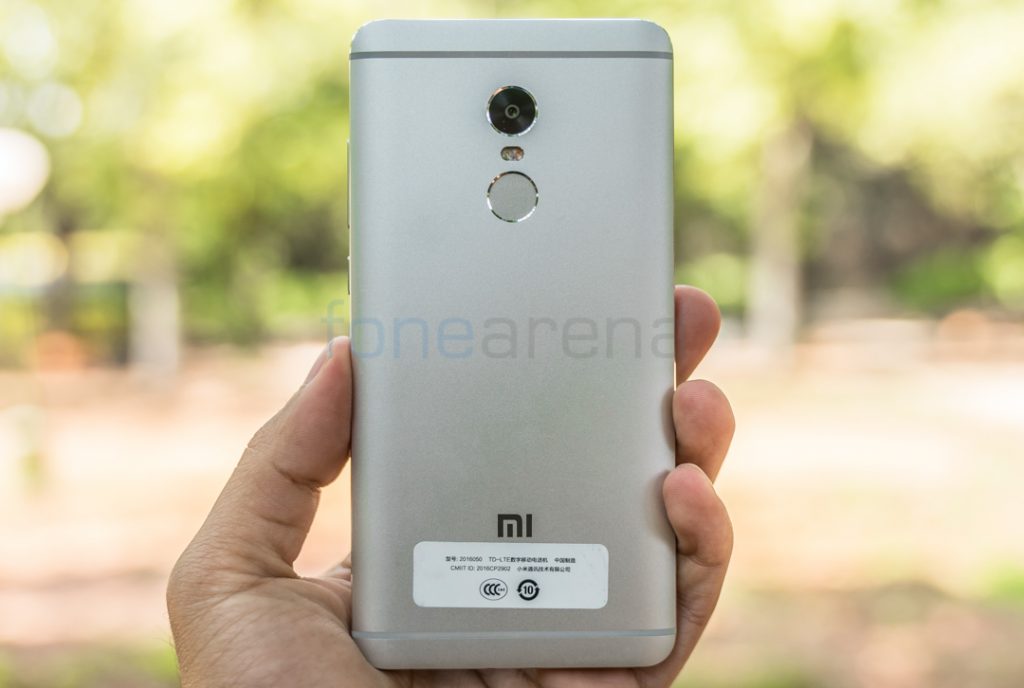
This is probably the main improvement that Xiaomi has done when it comes to the Redmi Note 4. It feels really solid and has a certain weight to it that suggests a premium device build. The Redmi Note 4 weights 175 grams compared to the 164 grams of the Redmi Note 3 and despite 11 grams not sounding like much, it does make a big difference. It isn’t too heavy either causing you to regret using it and the weight distribution is handled well too. The device is now more angular compared to the more rounded Redmi Note 3.
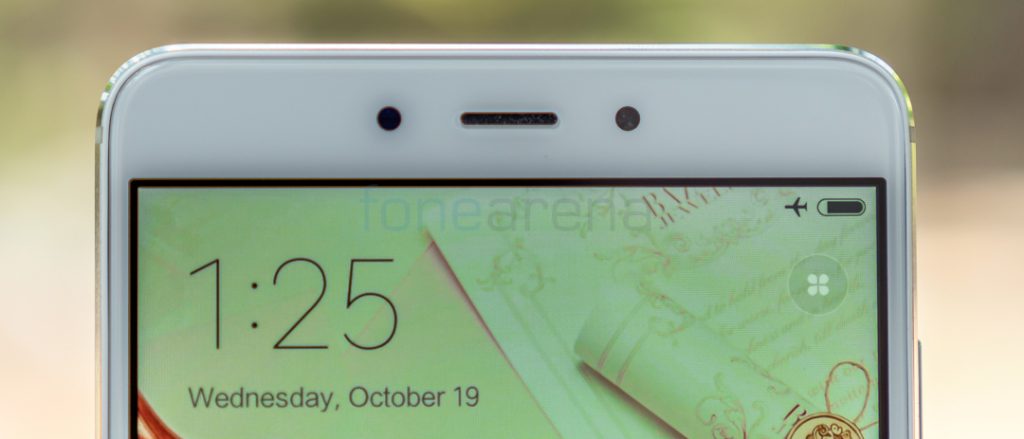
The back panel is quite plain but has improved grip thanks to the soft touch finish and you get antenna lines instead of plastic caps at the top and bottom. Up front, the 5.5″ display takes up most of the room and the footprint is almost exactly the same. Thickness has been reduced from 8.7mm to 8.4mm and that has improved the ergonomics too. It no longer is curved at the sides but tapers towards the edge to give a better grip. The chamfered edges at the sides on the front and back looks really elegant too.
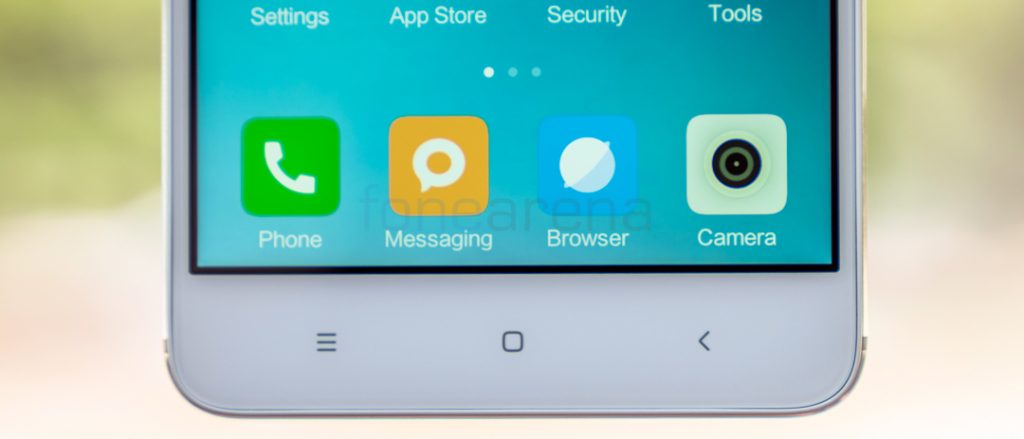
Above the display is the usual front facing camera, earpiece, ambient light as well as proximity sensors. Below it, you have the capacitive buttons which are backlit.

At the bottom, you have a microUSB port, the primary microphone and loudspeaker grille. At the top is the 3.5mm audio jack, secondary microphone and the IR blaster.
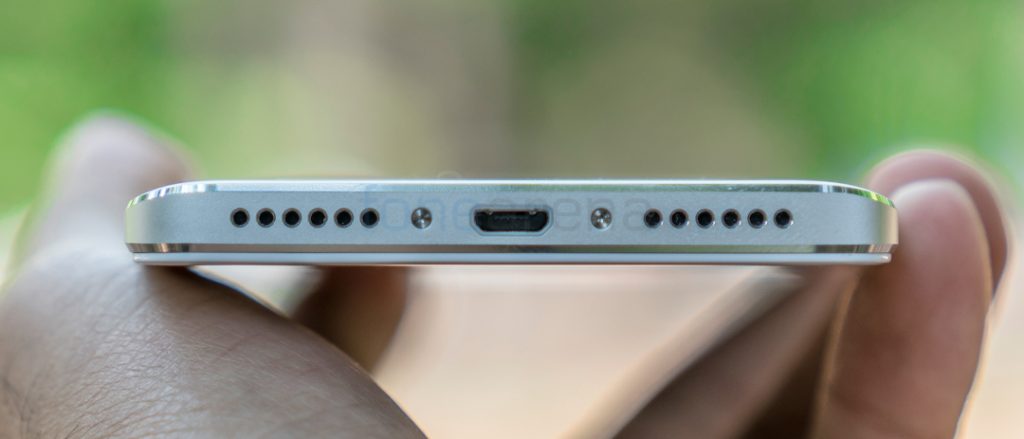
The right side houses the power button and volume rocker which are both made of metal and provide really good feedback when pressed. They are raised sufficiently from the body too but the power button could’ve benefited from having a groove or pattern to help distinguish it from the volume rocker.
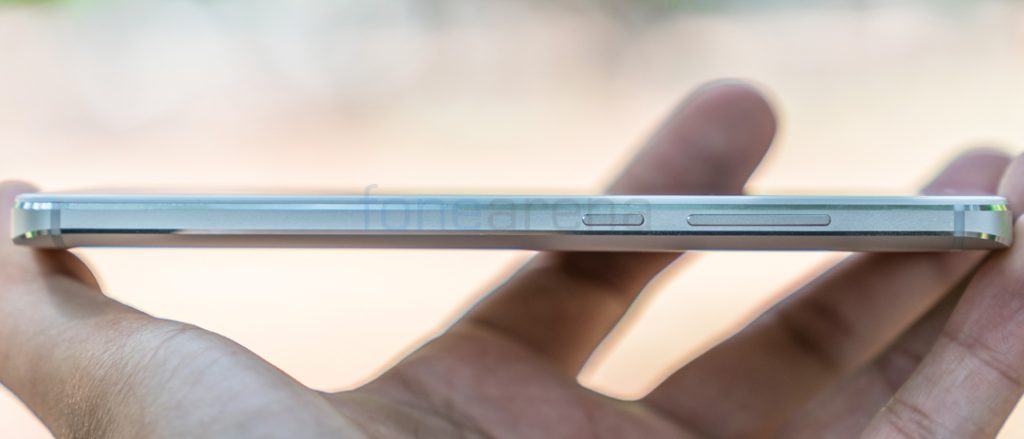
The left side has the Hybrid DualSIM slot and at the back is where you find the 13 Megapixel camera, dual-tone LED flash and fingerprint sensor. Both the camera unit and the fingerprint sensor have an inner chamfered edge as well. Colour choices remain the same as the Redmi Note 3 with options of Grey, Silver and Gold.
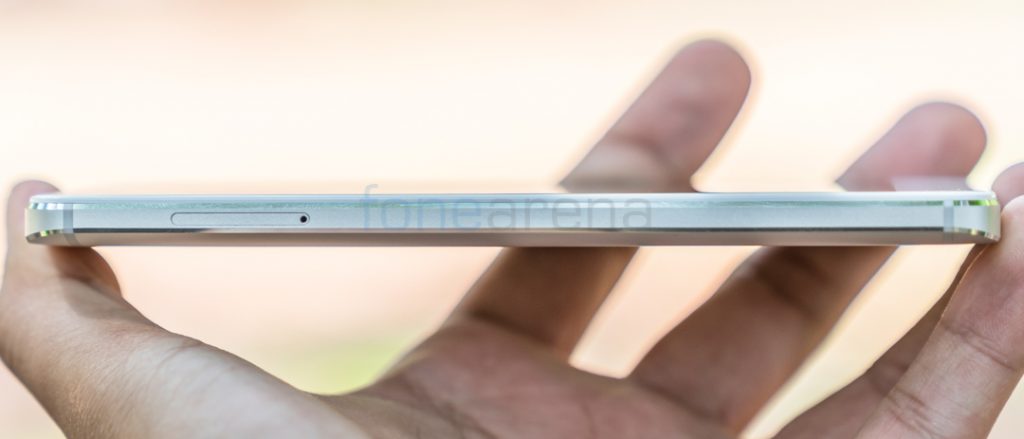
Display
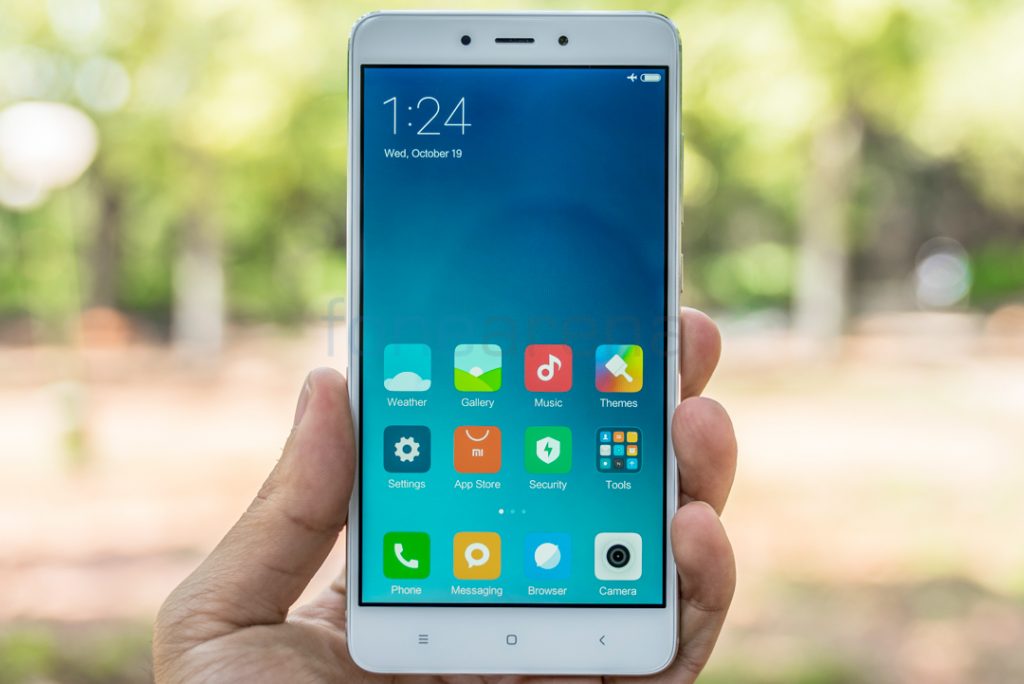
The Redmi Note 4 uses the same 5.5″ 1080p IPS display as the one found on the Redmi Note 3. The sunlight legibility seems to have been improved by a slight margin and the display is brighter too. There is still a black border running all around the display and although it is very minimal, it maybe better to get a dark coloured variant to make it seem less obvious.
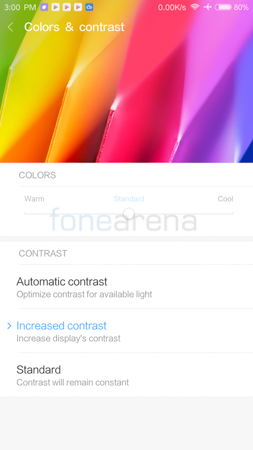
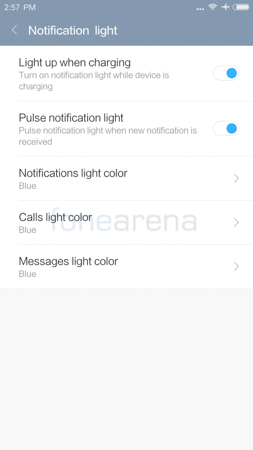
The display is a bit reflective but the brightness more than makes up for it. The 2.5D curved glass up front feels good to use but seems to have less of a curvature than other devices with the same type of glass. Xiaomi hasn’t mentioned what sort of scratch protection it uses but so far the device has no scratches with regular usage. The display does support auto-rotate as well as double tap to wake.
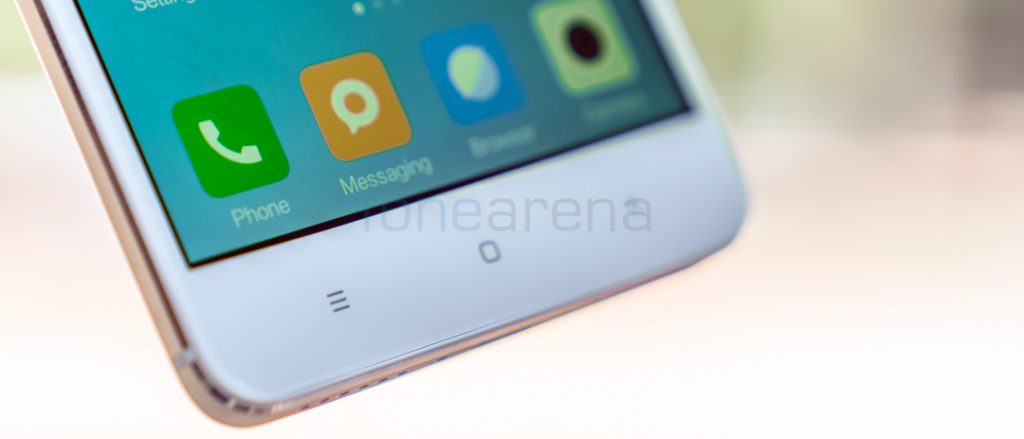
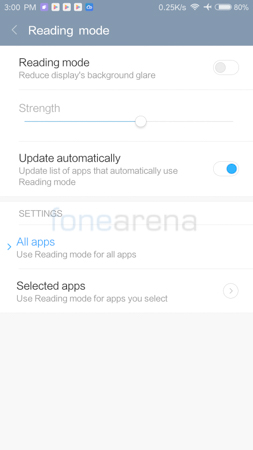

The capacitive keys are backlit in white and the illumination is customisable. You can choose the duration for the illumination or to have it always on/off. You have a customisable notification light to the right sid of the front facing camera. You can also adjust the colour balance as well as the contrast modes. You also have a reader mode which is like the eye protection or night mode available on other devices. It cuts down on the amount of blue light emitted by the display to prevent eye strain. But the great thing is the customisability for the option. You can set the strength of the reduction as well as specify which apps in particular to use the reading mode with if you don’t want it across all apps.
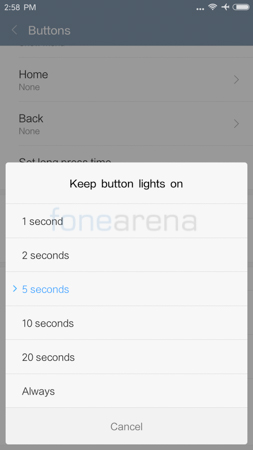
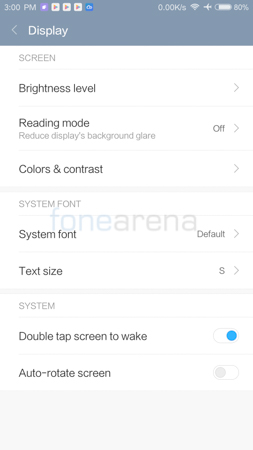
Fingerprint Sensor
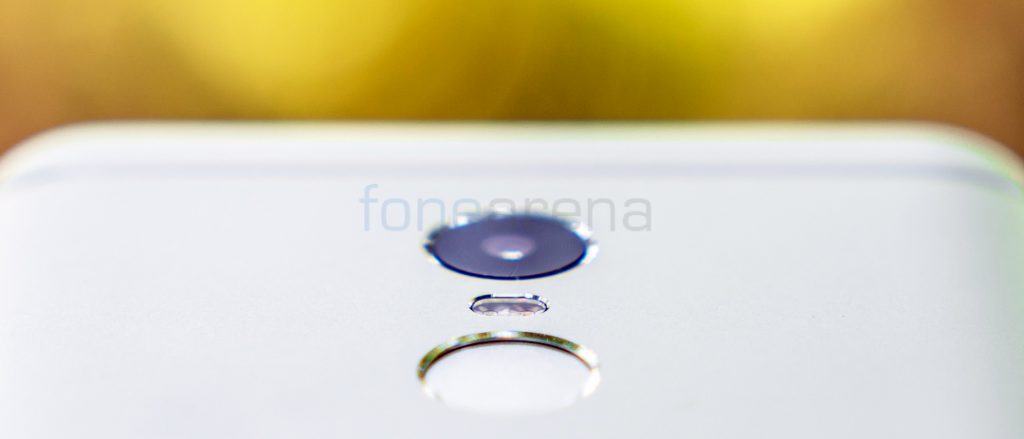
The fingerprint scanner is a rear mounted one and can be found just below the camera unit. It is an always on unit that can unlock your phone directly from sleep if need be rather than having to wake it up and then place your finger on the sensor. The accuracy is pretty good and so is the speed of detection. However, it does take a while for the phone to wakeup and unlock itself which makes it slower compared to other smartphones in the league. It probably seems even slower than the rest due to the animation used to display the homescreen from sleep. It works in 360 degree and can store upto 5 different fingerprints at a time.
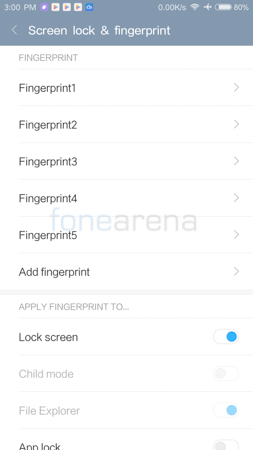
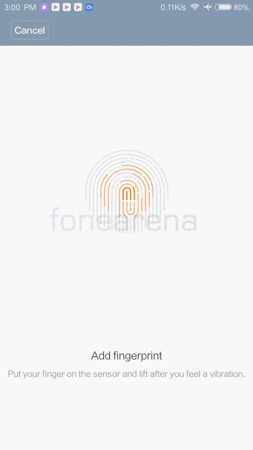
The main issue we found with the fingerprint sensor is its inability to detect fingerprints when your finger or the pad is relatively wet. So we have had to clean it on quite a few occasions before it detected our fingerprints.
Calling and Messaging
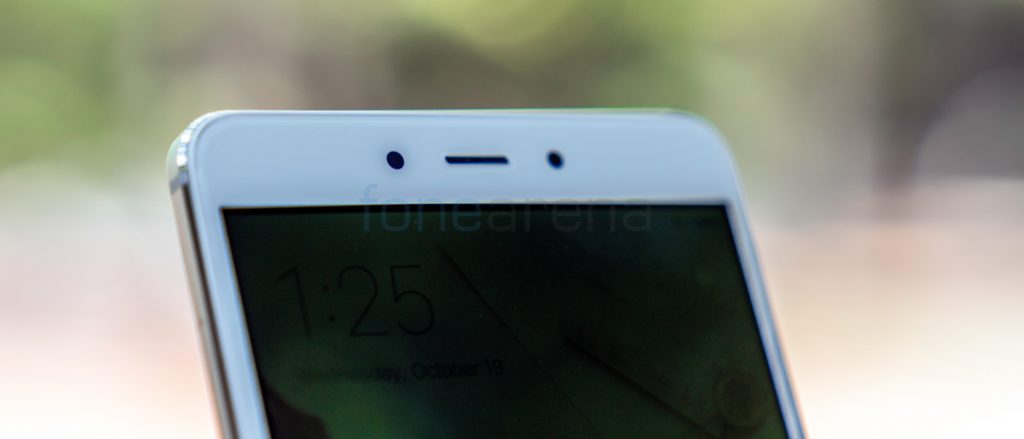
Call quality is pretty good over the earpiece but I did find the volume to be a bit on the lower side and while it may suffice for most situations, you may face some difficulty in noisier environments. In such cases, a bluetooth or wired headset might help you better. The loudspeaker was decently loud and clear though and I didn’t have much to complain about that.
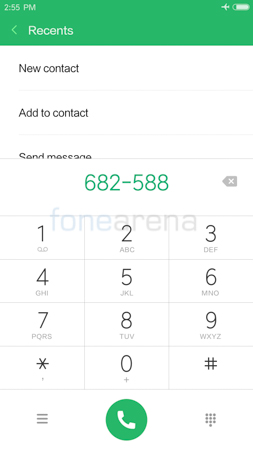
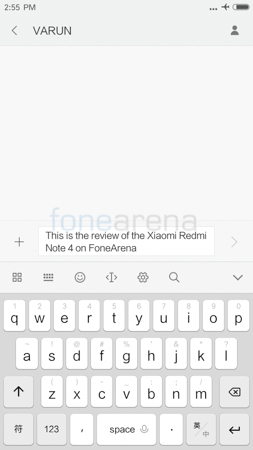
The default keyboard on the Note 4 is called Sogou. It isn’t very intuitive and I personally prefer Google Keyboard or Swype over it and since it is Android, it is easy to install 3rd party keyboard of your choice on it.
Software and UI
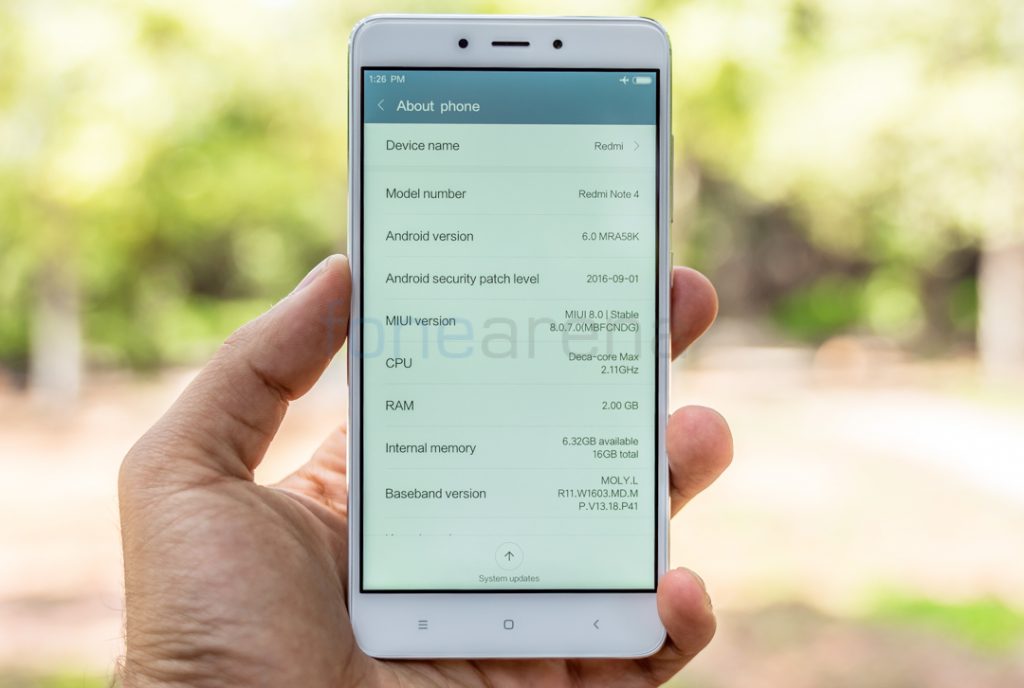
The Redmi Note 4 comes pre-loaded with Android Marshmallow 6.0 with MIUI 8.0 on top of it. Apart from all the Marshmallow goodness, MIUI provides a lot of options for customisation.
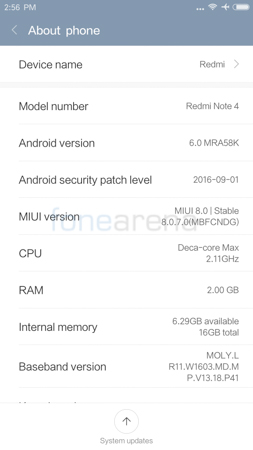
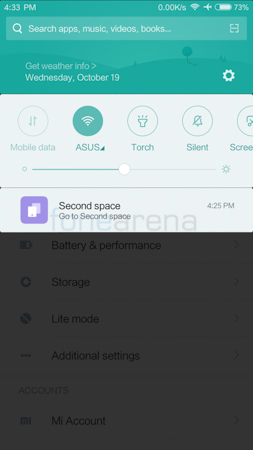
One of the most interesting features is called second space. It essentially allows you to use your phone as two different devices. The content on one will be exclusive and the other space can’t access it. You can unlock the other space using a pattern or fingerprint or whatever form of security you have chosen for it. So you could use your single phone as two phones for work and for personal use or perhaps people can share one phone as a backup phone or any other use cases you would have.
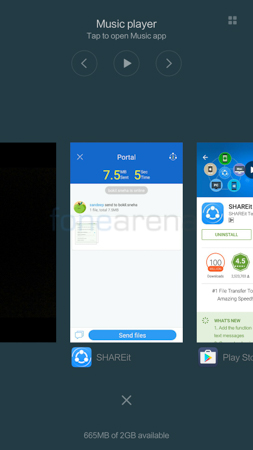
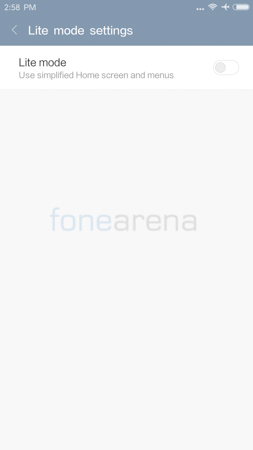
There is a lite mode for simplified home and menus incase the default layout is too complex for you. The notification bar can be customized to show the connection speed as well as carrier name and you can also specify carrier names of your own choice. The battery indicator too is available in a top bar, graphical or percentage options.
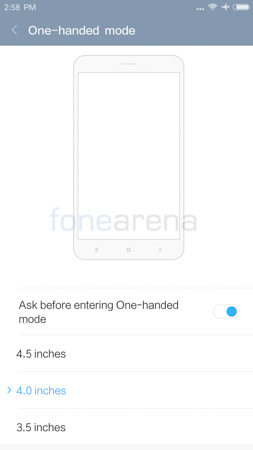

Bringing down the notification bar reveals a search bar that you can use to search between apps, music, videos etc as well as weather information and details about date, day etc. Then you have the quick toggles, a brightness slider and finally the notifications themselves.
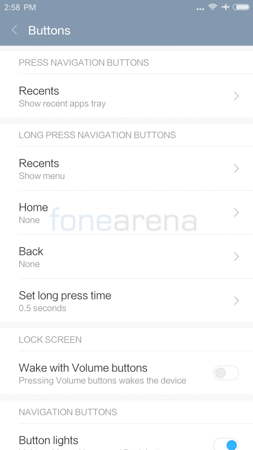
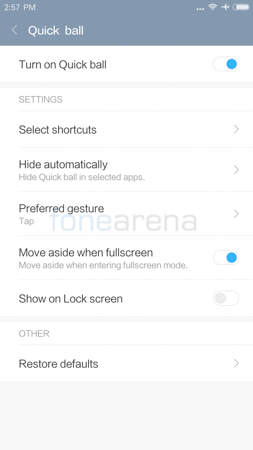
Additionally, users can enable quick ball, a feature that appears on screen and expands to reveal shortcuts. You can move it around and align anywhere along the right side or left side of the screen. You can customize the capacitive buttons to perform different functions for a long press and also specify how small or large you want the one handed usage mode to be.
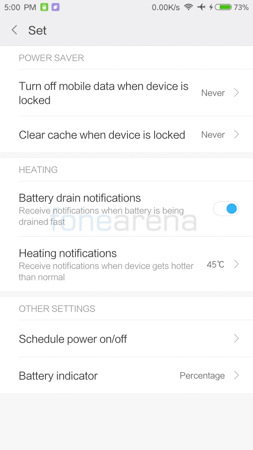

It is important to note that if you get the Chinese/English variant of the Redmi Note 4, you will need to side load the Google Play Store and also even if you choose English as a language, there will be hints and traces of Chinese left throughout the UI unless you flash a custom ROM. Lastly, you have a Mi Mover setting that allows people to send or receive data when they are shifting phones and the phone is smart enough to notify you in case the battery is draining fast or the phone heats up beyond a specified temperature which starts at 40 degrees Celcius.
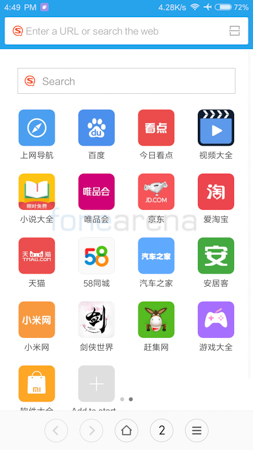
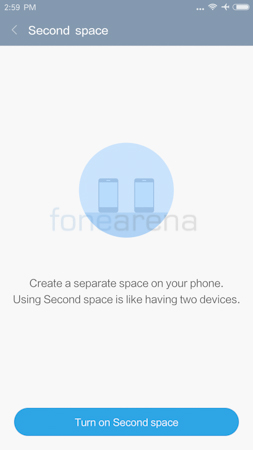
Storage, Connectivity and Performance
The Note 4 comes with 16GB of internal memory out of which 10.81 GB is available upon first boot. The storage is expandable using microSD cards upto 256 GB in capacity in the Hybrid DualSIM card slot. There is also a 32GB variant with 3GB but the one we have is the 16GB variant with 2GB of RAM.
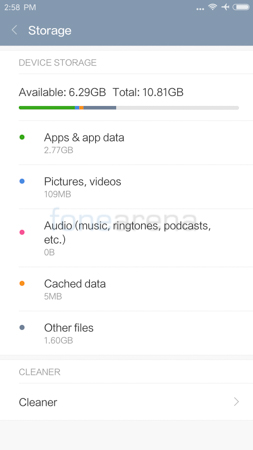
There is a microUSB port although we would’ve loved to see a USB Type-C port since most manufacturers even Xiaomi included have made the switch on most of their recent smartphones. Still, not really a con since the microUSB port works fine. You also get USB OTG, Bluetooth 4.2 as well as Dual-Band WiFi 802.11 a/b/g/n/ac.
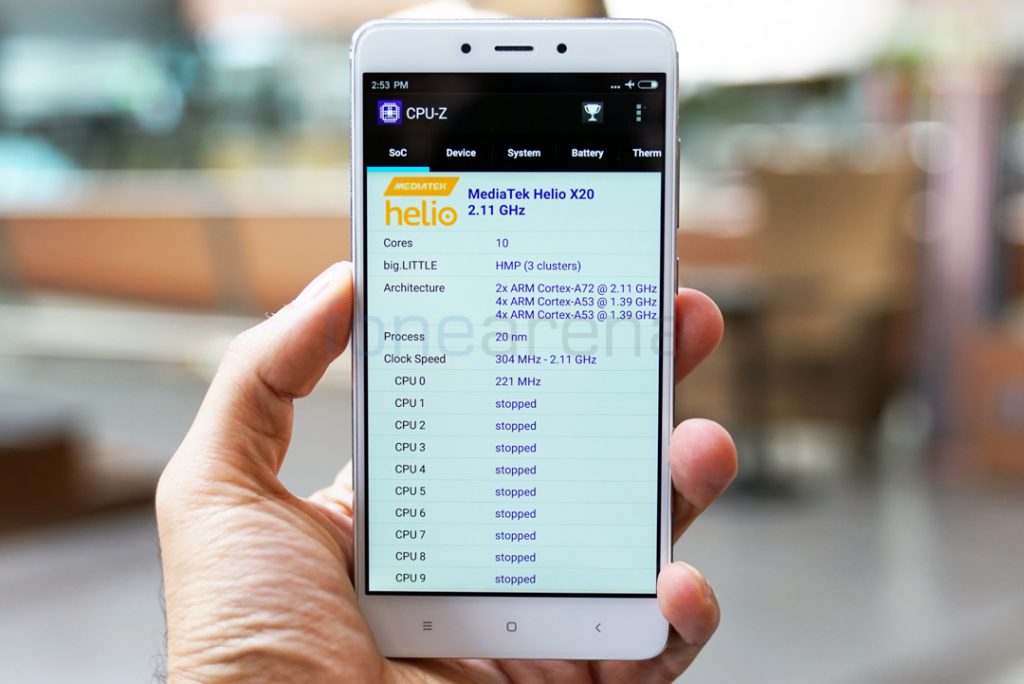
It is powered by a brand new Helio X20 deca-core processor with 10 cores clocked in at 2.1 GHz. The performance is pretty good and the device is quite stable but we found that 2GB of RAM was a bit short when multi-tasking in certain situations. So in case you are a power user, you would be better off with the 3GB RAM variant. Performance is a lot better than the Helio X10 powered variant of the Redmi Note 3 that was available in China and even better than the Redmi Note 3 Snapdragon 650 variant that is available in India and often referred to as Redmi Note 3 Pro albeit by a smaller margin. The CPU performance puts it on par or even better than some of the Snapdragon 820 powered devices in certain tests but the GPU performance powered by the Mali T-880 MP4 isn’t that great. Here are some benchmarks that help you
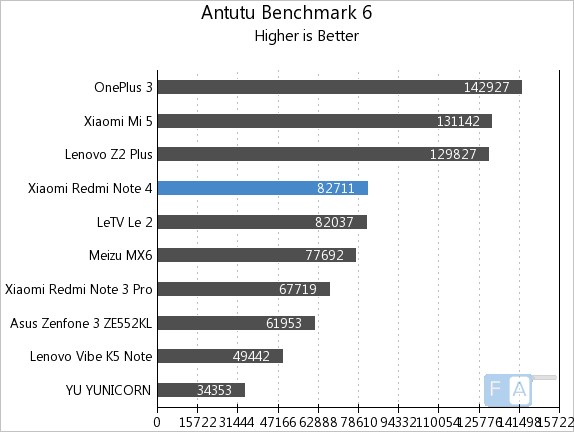
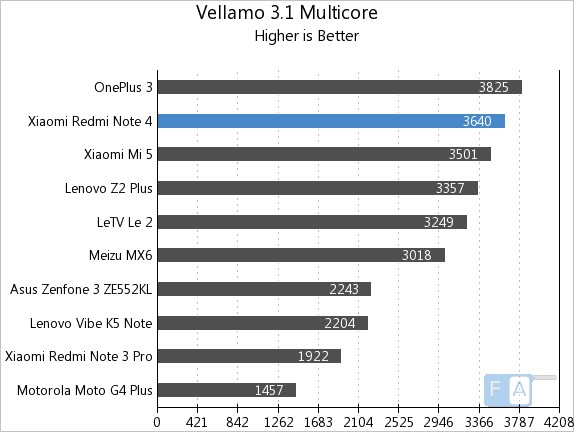

Camera
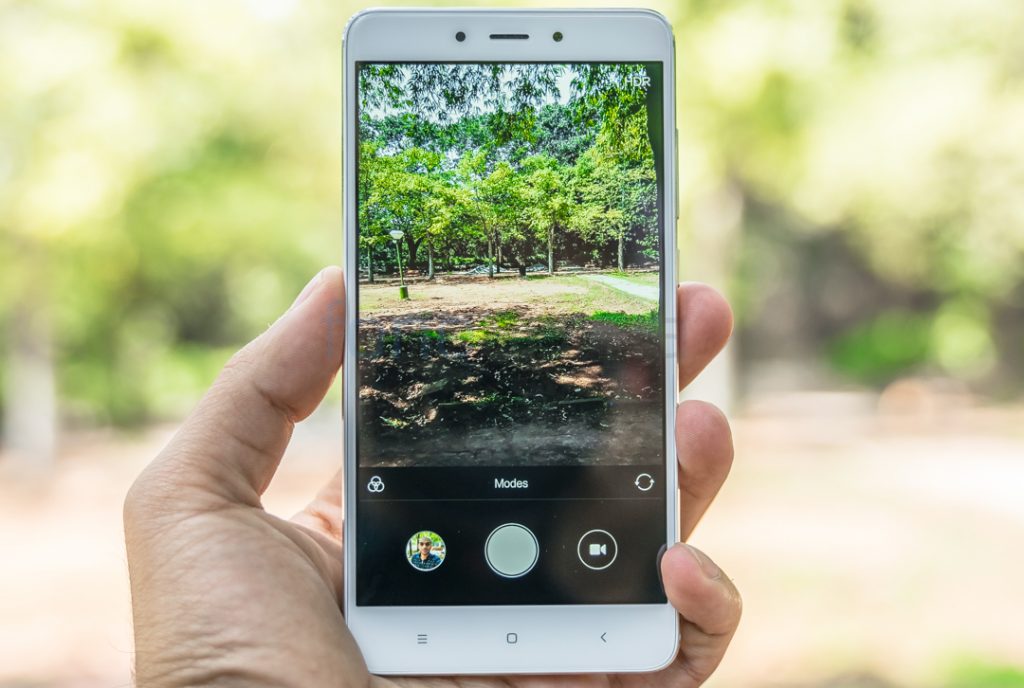
The primary camera is a 13 Megapixel unit which matches the resolution of the Mediatek powered Redmi Note 3 but is lower compared to the 16 Megapixel on the Redmi Note 3 Pro. You also get a similar PDAF and dual-tone LED flash but a larger f2.0 aperture. Click on any of the photos below for the full resolution samples.
The camera quality is decent but not great and is a step in the wrong direction compared to its predecessors. The dynamic range is not that great and even HDR mode fails to capitalize on the missing rang properly. What is good is probably the colours which tends to be on the more saturated end that majority of the people like. Sharpness too is a bit of a mixed bag, photos are either too sharp or too soft, nothing in between. Photos on the top are taken in HDR mode while the ones on the bottom are captured in normal mode.
The front facing camera still has 5 Megapixels of resolution and an f2.0 lens but the video recording is now downgraded to 720p compared to 1080p on its predecessors.
The phone can be set to show your age and gender or just the gender which is a pretty useless feature. I’m completely certain that anyone that is using the phone will be certain of his/her gender as well as age. Unless you want to find out the age of a stranger which most of the time it gets wrong. I’m 24 but the camera says I’m 28 or higher. (Can’t blame it though since I have a receeding hairline and have trimmed my head quite close). However, it does get the age wrong for other people too in my experience and to avoid offending anyone or embarrassment, its probably better to turn it off.
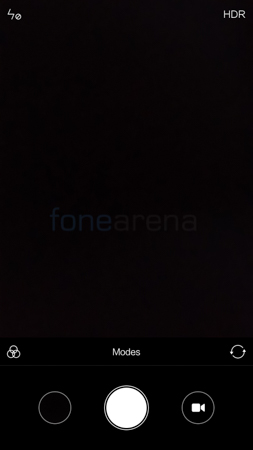
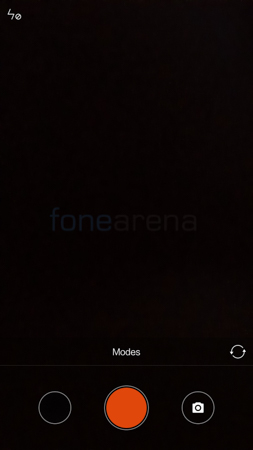
The interface itself is a bit clunky and weird to use. You will get used to it in a while but it lacks customization and options that we’ve come to expect in most smartphones in this day and age.
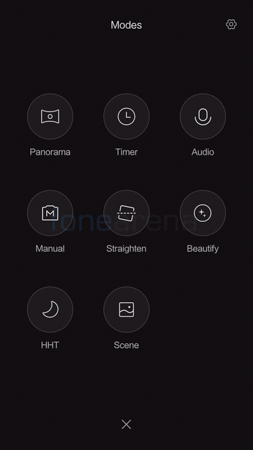
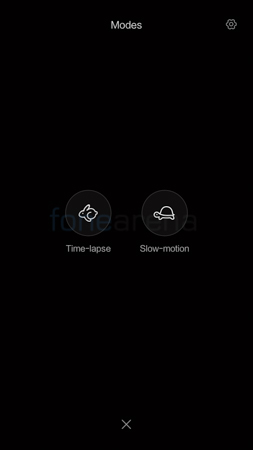
Manual mode is pretty much useless since the only two functions you can control are the ISO and White Balance. No manual focus or shutter speed here let along exposure compensation and RAW support. Video recording maxes out at 1080p and fails to impress in terms of details
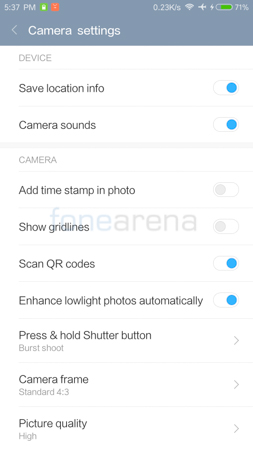
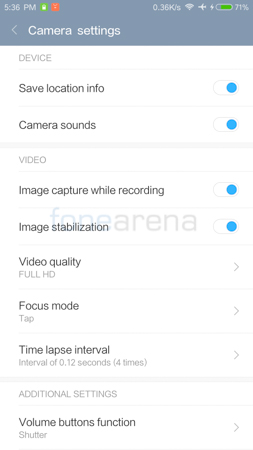
Music
The Music Player on the Redmi Note 4 is pretty minimalistic in terms of the UI but has support for pretty much all you need. It has both online and offline playback support and tracks can be grouped in terms of songs, artists, albums and folders.
The only thing missing is an equalizer but there are a few presets that you can use to enhance the listening experience with Xiaomi headsets. The audio quality over earphones is decent but not great. The loudness is more than sufficient though and has enough loudness but lacks in dynamic range. The loudspeaker is pretty loud but is mono and tends to distort at higher volumes.
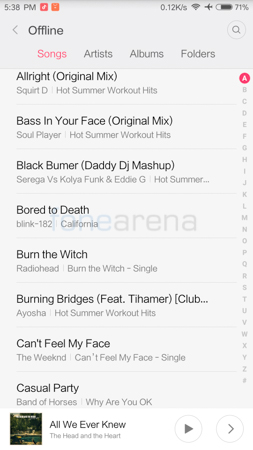

There is also a built in FM radio app that requires you to connect your headphones to listen to. However, once connected, you can choose between the headphones or loudspeaker to listen to. Additionally, you can record the audio and also set a sleep timer to auto turn off the FM after a duration.
Battery Life
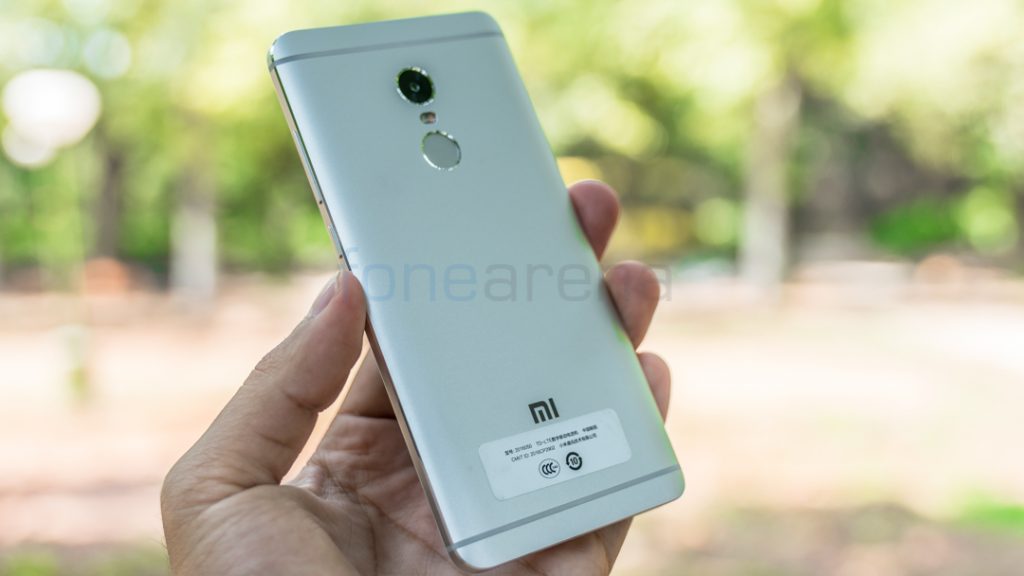
The Redmi Note 4 features a non-removable 4100 mAh battery which provides good battery backup even for heavy users and should last a day of use even for power users. We are currently performing our battery life tests on the device and will update this section with the results shortly.
Conclusion

The Redmi Note 4 is not really a true successor or an upgrade to the Redmi Note 3 as its name might suggest. I wouldn’t recommend this to someone who has a Redmi Note 3/Note 3 Pro or a device that is similarly specc’d. While it does offer a better performance, the rest of experience is largely familiar to its predecessor and is a bit inferior to the Redmi Note 3 in some ways. We’ll probably have to wait for the Redmi Note 5 or whatever comes next for a proper handset to upgrade to. If you are looking for a performance oriented mid-ranger handset, this is worth your buck. It is currently unavailable in India but you can purchase it at Gearbest and import it to India or your home country.
Pros
- Good Build Quality
- Fast Fingerprint Sensor
- Good CPU Performance
- Good Display and Sunlight Legibility
- Customisable Reader Mode
Cons
- Multi-tasking is laggy on the 2GB RAM Variant
- Fingerprint Sensor is Quite Volatile when in Contact with Moisture
- Audio Quality Isn’t Great
- Camera Quality is inferior to the Redmi Note 3







